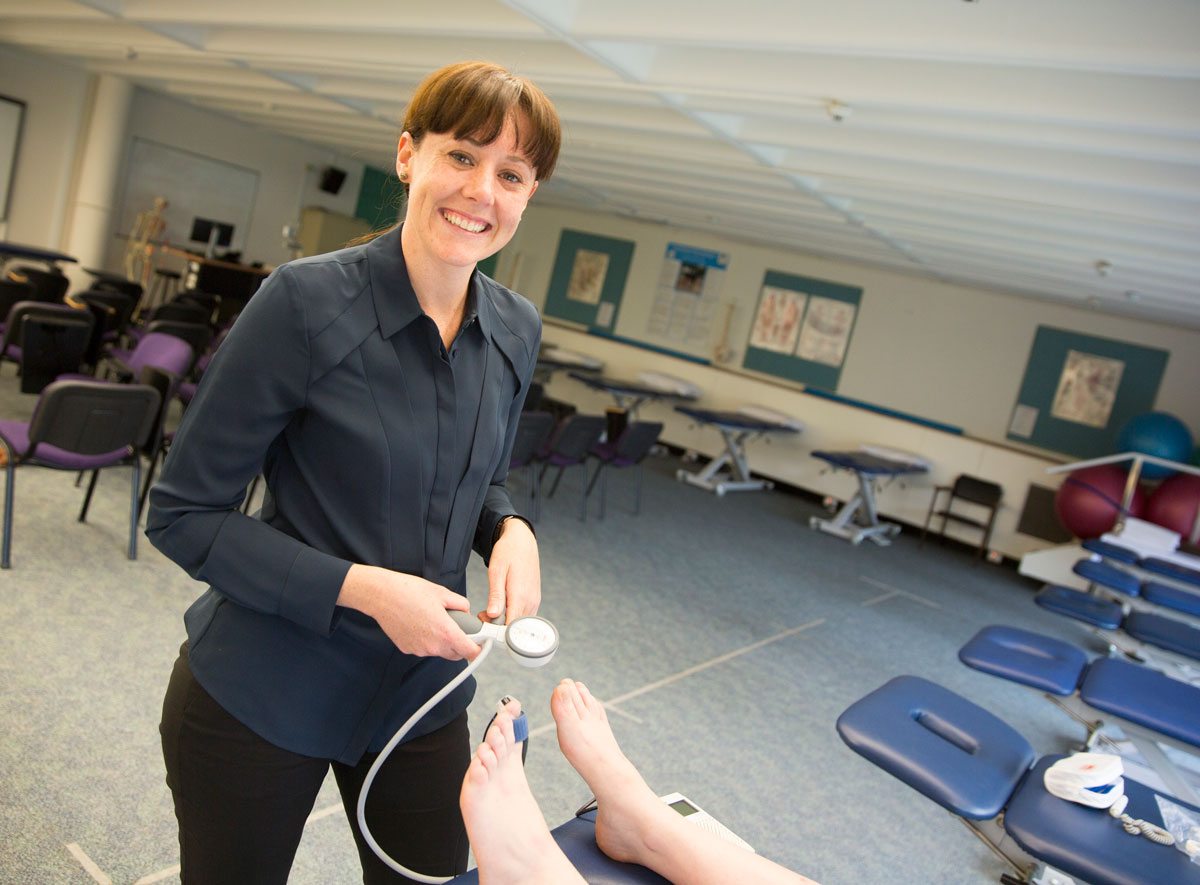Researcher Highlights
From head to toe
Dr Peta Tehan
Now conducting research into podiatry assessment methods, Dr Peta Tehan started her career at, quite literally, the opposite end.

“I actually started university enrolled in psychology!"
“But one of my housemates was always talking about her experiences with her degree in podiatry and it sounded really interesting.”
Hands-on health care
Peta knew that she wanted to work in health care, and she liked that a podiatry degree would give her a direct route into the clinic. She made the switch and got her first job in a regional practise straight out of uni.
“We were the only clinic in town so we saw just about everything. It was a really great experience.”
Later on in her career, Peta started working at the High Risk Foot Clinic at the John Hunter Hospital.
“We were looking after people who were impending amputation – that was a huge eye opener. People would come in with these gaping wounds in their feet. It’s just so preventable so much of the time.”
When a patient comes into a podiatry clinic, one of the assessments they will undergo is that of blood flow.
“It’s just so important in terms of wound healing."
“So many of our patients had poor blood flow but we didn’t know it or we weren’t screening properly for it, or it was an afterthought."
“Really one of the first things we should be looking at is whether or not they have adequate blood flow. Then if they don’t then we should base our care plan around that.”
While there are a number of tests available to use, current national guidelines still only recommend using the most basic; palpate a pulse.
“If you can’t do that, then the patient is often sent for Duplex ultra-sound testing to check for blood flow."
“That costs Medicare over $300, and a lot of clinics just don’t have the resources as it’s such a specialist method."
“There are alternate methods … but when I was using those, I just kept seeing them fail."
“I could tell by my clinical judgement that the feet were ischemic (deprived of blood) - but the tests were coming back normal.”
A frustration-fueled research project
When Peta got involved with UON’s Podiatry Teaching Clinic, she met an important mentor in Associate Professor Viv Chuter.
“I remember telling her about a wound care course I did and she got so excited at the idea that I was interested in doing more study."
“Then I started talking about how frustrating all the blood flow tests were, how we couldn’t solve this fundamental problem."
“She told me, ‘Well Peta, there’s only one way to find out more!’ So I enrolled in a PhD and she became my supervisor.”
Peta compared three different methods of testing blood circulation to the gold standard: the duplex ultra-sound. She compared the accuracy to these methods across two key cohorts: diabetic vs non-diabetic.
“I saw that all three tests were less accurate in the diabetes patients."
“It just goes to show that this population which podiatrists deal with all the time is very difficult to assess, and that they have very specific problems with their condition which affects how we determine blood flow."
“As podiatrists, we need a test which is quick and easy, but we can’t do just one test alone. We need to do a combination of tests if we want to get an accurate result.”
Co mbining research, teaching and clinical practise
Throughout her studies, Peta maintained her clinical practise, and still tries to fit in at least one day a week in the clinic.
“It can be very difficult to do but it’s so important.”
Peta also mentors her own set of students, through UON’s unique Podiatry Teaching Clinic, which was established by Professor Viv Chuter, Nicole Martin and Peta herself.
Podiatry students are obliged to do 1000 hours of practical experience throughout their undergrad degree, but it can be stressful and expensive finding long term placements.
Through the teaching clinic, students can get up to 600 hours’ worth of their required experience, and they are providing a direct service for the community. They’re also freeing up local podiatrists’ time to work in specialist clinics, where they are needed the most.
“The students do everything. They get the patient, bring them in, take their history, do the treatment and take the notes. They then present the patient to me so I can oversee everything."
“A good day is a day when I don’t have to put gloves on!”
The University of Newcastle acknowledges the traditional custodians of the lands within our footprint areas: Awabakal, Darkinjung, Biripai, Worimi, Wonnarua, and Eora Nations. We also pay respect to the wisdom of our Elders past and present.
